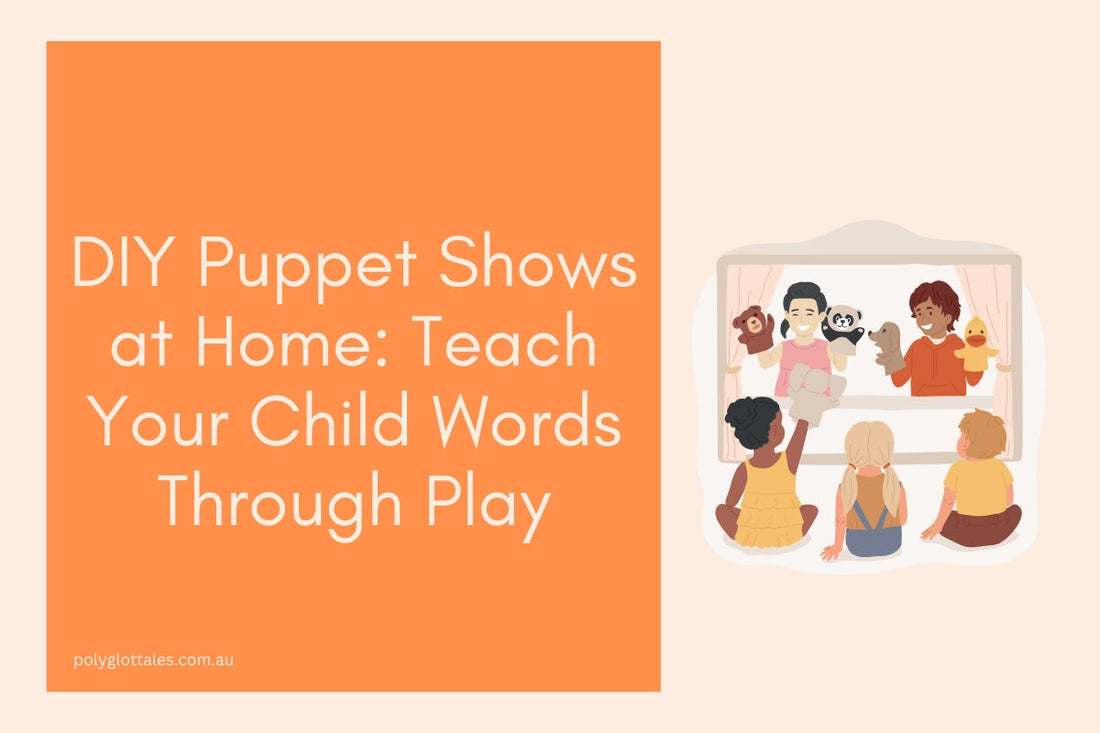Looking for a fun, creative way to help your little one learn new words while keeping them entertained? DIY puppet shows are a magical way to combine play, storytelling, and early language learning — perfect for babies, toddlers, and preschoolers.
Why Puppet Shows Are Great for Young Children
Puppet shows aren’t just for giggles (though the giggles are a big bonus!). They help:
-
Build vocabulary: Using simple puppets lets you introduce new words in a playful, memorable way.
-
Encourage expression: Puppets give children a safe space to act out feelings and stories.
-
Support bilingual learning: Whether your child is learning Hindi, Japanese, Chinese, or Italian, repeating words through puppet play makes language fun and engaging.
-
Boost creativity: Making and performing puppets sparks imagination and storytelling skills.
DIY Puppet Ideas You Can Make at Home
1. Sock Puppets
Use old socks, buttons, felt, or scraps of fabric. Glue on eyes and a mouth, and voilà! You’ve got a character ready for storytelling.
2. Paper Bag Puppets
A classic favourite! Decorate paper bags with markers, stickers, or cut-out shapes. The bottom flap becomes the puppet’s mouth — perfect for tiny hands.
3. Finger Puppets
Small and simple, finger puppets are great for babies and toddlers. You can make a set of animals, family members, or storybook characters.
4. Stick Puppets
Glue paper characters onto popsicle sticks. These are easy to hold and fun for acting out short stories.
Puppet Show Playtime Ideas
-
Storytime with Puppets – Pick a favourite story and use puppets to act it out. Encourage your child to repeat simple words in the language you’re teaching.
-
Word of the Day Puppet – Choose one new word in your target language and make a puppet “say” it throughout the day.
-
Sing Along Puppets – Use puppets to sing simple songs or nursery rhymes in your home language.
-
Family Puppet Shows – Invite siblings or parents to join. Creating little performances together makes language learning social and memorable.
Making it Bilingual
For bilingual families in Australia, puppet shows are a gentle, playful way to introduce multiple languages. You might:
-
Introduce one character speaking English, another speaking Hindi, Japanese, Chinese, or Italian.
-
Repeat simple phrases, like greetings, colours, or animals.
-
Use puppets to act out everyday routines, like “brushing teeth” or “tidying up,” in both languages.
Extend the Fun With Storybooks
Want more ideas for your puppet adventures? Polyglot Tales offers carefully curated storybooks in Hindi, Japanese, Chinese, and Italian, perfect for inspiring your puppet shows. Use your favourite characters from the books to make puppets and bring the story to life at home. Check out our online store for books that make language learning magical and fun.
Tips for Parents
-
Keep sessions short: 5–15 minutes is perfect for little ones.
-
Let your child lead: Follow their imagination rather than sticking strictly to the script.
-
Celebrate creativity: Every puppet show is a learning win, no matter how wobbly or silly it gets!
Puppet shows are more than just play — they’re a bridge to language, creativity, and confidence. With a little DIY magic, you can turn everyday moments into memorable bilingual learning experiences.

